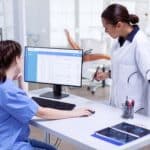Organizations must update their disaster recovery strategies to consider the risk of natural catastrophes in 2023.
With remote work becoming more common and the need to safeguard employee health and safety during recovery efforts, recent events have caused significant changes in corporate operations. As a result, businesses should review their current policies for handling natural disasters and incorporate pandemic response strategies.
By allowing remote access to systems even when physical offices are inaccessible, adopting cloud-based operations may reduce downtime. Additionally, organizations must consider any limitations on outside aid resulting from resource limitations during natural catastrophes and epidemics.
Additionally, preserving dispersed assets, confirming backup supply chains, setting up efficient communication routes, and resolving issues with insurance claims are essential to take into account.
Ultimately, businesses should prioritize employee support and well-being in their disaster recovery plans to restore productivity despite natural catastrophes and the pandemic’s ongoing effects.
Evaluating Your Existing Disaster Plan
Businesses need to consider the changes in day-to-day operations and ensure the health and safety of their workforce. Updating emergency protocols is essential to address new, unique challenges.
To guard against natural catastrophes, employee safety procedures should be reviewed and improved. Since remote work has increased in popularity over the past few years, disaster recovery plans must also contain techniques for it. The evaluation of remote access options, the provision of dependable channels of communication for a distributed workforce, and the solution of logistical issues related to remote operations are all included in this.
Changing Disaster Recovery Operations to the Cloud
Problems with remote access after a natural catastrophe are eliminated when switching to cloud-based operations for disaster recovery. This method tackles several issues that businesses have while attempting catastrophe recovery.
First, since all operations are moved to the cloud, relying on remote connections to access actual office workstations or servers is no longer necessary. By doing this, it is ensured that staff may continue working without interruption from any place with an internet connection, even if the office loses power or internet.
Second, companies may overcome interruptions brought on by limited external support by being less dependent on neighborhood emergency response teams during a natural catastrophe.
Additionally, cloud-based operations protect critical resources and reduce the hazards a scattered workforce brings.
Overall, moving activities to the cloud has several advantages for disaster recovery planning, resolving issues with remote work, and maintaining company continuity in the case of unanticipated catastrophes.
During a Natural Disaster, Adapting to Limited External Assistance
For enterprises to successfully navigate the difficulties brought on by a natural catastrophe, it is essential to incorporate measures to deal with the limited external help. Collaborative readiness, resource allocation, and community involvement are essential to work around these restrictions.
Collaborative preparation entails working with local emergency response teams, governmental organizations, and other organizations to create thorough disaster recovery plans for anticipated resource limitations.
To guarantee that crucial resources, including personnel, equipment, and supplies, are distributed effectively during a natural catastrophe, meticulous planning and prioritizing are required.
Active community engagement emerges as a cornerstone for resilience-building and cultivating collaborative efforts. By interacting with residents, businesses can deepen their grasp of community needs and utilize existing networks to rally support in times of crisis.
In the broader picture, embracing these strategies can steer organizations through the challenges of limited external assistance during a natural disaster.
Protecting Mobile Employees’ Assets in a Remote Work Environment
Securing distributed assets becomes essential for preserving operational resilience as businesses grow their remote workforce.
A thorough disaster recovery strategy must guarantee asset protection and safeguard distributed resources. Due to the rise in remote work, essential physical resources like staff and equipment are now dispersed across a larger region, leaving them more vulnerable to damage or destruction in the event of a natural catastrophe.
Organizations should proactively implement safeguards to protect their distributed assets to meet this problem. Encrypting hardware and data, putting in place stringent access restrictions, and routinely backing up essential data to safe cloud servers are a few examples of how to do this.
Supply Chain Disruptions in the Face of a Natural Disaster: A Practical Guide
To handle interruptions brought on by a natural disaster, businesses must carefully evaluate the accessibility and dependability of their backup supply networks. As a result of delayed transportation routes or destroyed infrastructure, businesses may experience inventory shortages, making supply chain resilience essential.
To deal with inventory shortages, businesses should build sensible backup sourcing methods. Diversifying suppliers and developing new channels of distribution are required for this. These steps can significantly decrease the effects of interruptions and guarantee a consistent supply of necessities.
Additionally, businesses have to consider implementing risk management procedures. This entails maintaining safety stock levels and monitoring supplier performance to identify supply chain risks.
Frequently Asked Questions
How can businesses ensure the safety of their employees when faced with the wrath of a natural disaster?
Firstly, fostering effective communication becomes the foundation, creating a solid bond between the company and its staff. Secondly, nurturing mental well-being protects against the emotional toll often accompanying such challenges. Lastly, weaving the fabric of preparedness includes imparting emergency training and arming employees with skills and knowledge that can make all the difference in times of danger.
What Measures Can Businesses Take to Reduce Downtime and Ensure Uninterrupted Operations During a Natural Disaster When Remote Access to Physical Offices Is Not Available?
Businesses can implement business continuity strategies like cloud-based operations, reevaluating external assistance, addressing location challenges, and establishing efficient communication protocols to minimize downtime and ensure uninterrupted operations during a natural disaster when remote access to physical offices is unavailable.
How Should Businesses Modify Their Disaster Recovery Plans in the Event of a Natural Disaster to Take Into Account Potentially Limited External Assistance From Local, State, and National Emergency Response Teams?
Companies should modify their emergency response plans by considering resource allocation, communication tactics, and training. This is required to plan for any potential limitations in the amount of outside aid provided by local, state, and federal emergency response teams in the event of a natural catastrophe.
What safeguards should businesses use when a sizable portion of their workforce is located remotely to protect their valuable equipment and dispersed assets?
Organizations should place secure storage facilities, regular equipment maintenance, remote monitoring systems, and thorough cybersecurity protocols to ensure uninterrupted operations when a sizable portion of the workforce works remotely.
How Can Businesses Ensure Their Backup Supply Chains Are Accessible and Reliable During a Natural Disaster?
Companies may conduct extensive analyses and audits before a natural catastrophe to ensure that their backup supply chains are accessible and reliable. Verifying the existence of substitute providers is part of this.
In conclusion, upgrading disaster recovery strategies is essential as businesses get ready for any natural disasters in the future years. This is possible by:
- Evaluating existing plans
- Changing remote access operations to a cloud-based model
- Getting used to having little outside help
- Protecting assets spread out in a distant working environment
- Dealing with supply chain interruptions
Organizations may effectively recover from natural catastrophes by prioritizing employee support and well-being throughout the recovery process.
Elevate Your Resilience with WheelHouse IT
In the wake of the shifting tides 2023, fortify your disaster recovery strategies with WheelHouse IT’s expert guidance. Harness the power of cloud-based operations, navigate the intricacies of limited external support, and safeguard your dispersed assets in the remote work era. Our team stands ready to usher your organization through the complexities of supply chain disruptions and community engagement, ensuring your path to recovery is paved with unwavering support and adaptive solutions. Embrace resilience with WheelHouse IT and stride confidently into the future.











